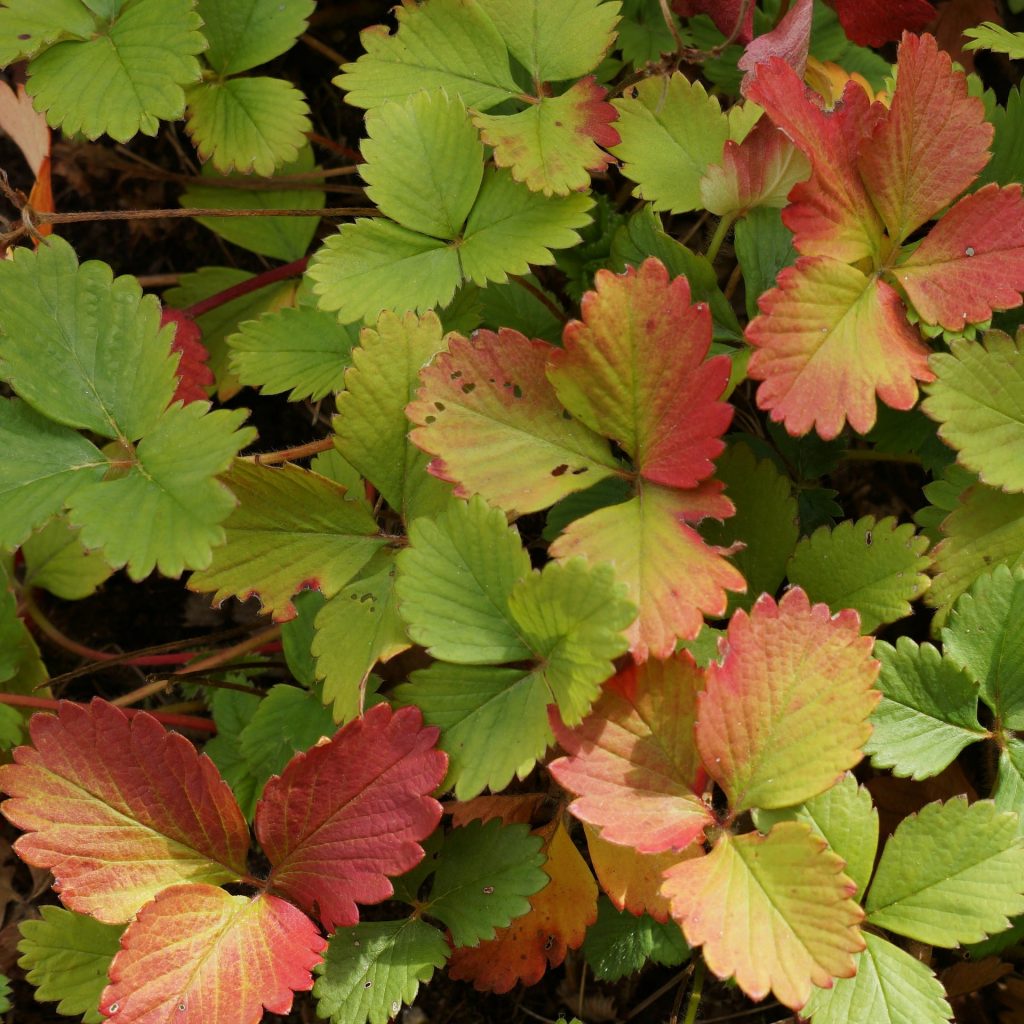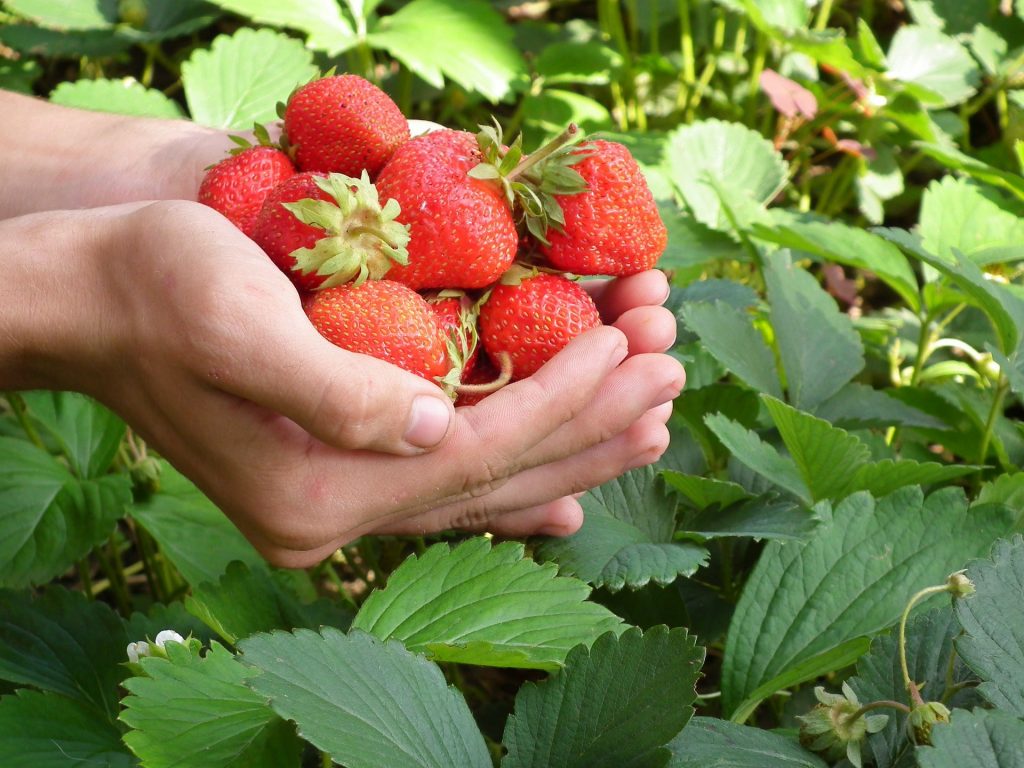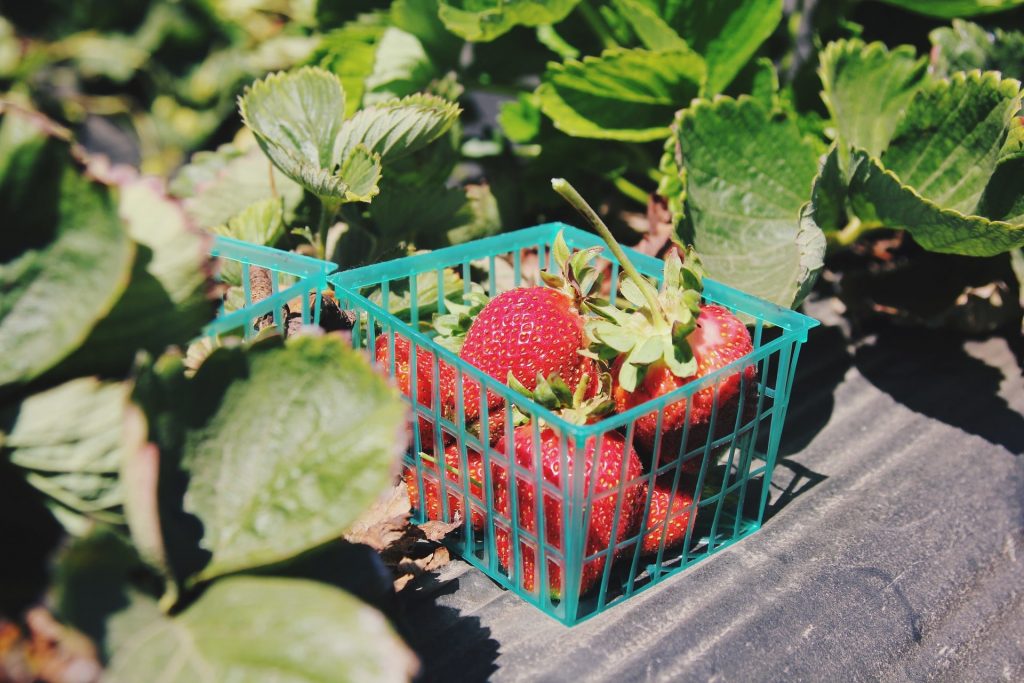Strawberries are a staple for numerous home gardens. These fleshy, sweet berries are so delicious to eat and are so versatile too. They can be used to prepare jams, sauces, desserts, and much more. Growing strawberries ourselves and then eating them bring so much pleasure. Even if you need them for business, it brings profit then too. But sometimes, diseases can effect growth of strawberries dramatically. If you are here, you might be thinking, Why my strawberry leaves are turning red.
Yes, it is something that you need to pay attention to. Here we have all the reasons for strawberry leaves turning red along with preventive measures and solutions for you. So, do check these out.
Strawberries have natural red pigment in them. The occurrence of red stems in strawberry plants is due to their genetic expression. Moreover, it is considered completely normal. However, in case leaves of your strawberry plant start turning red, you need to worry about them. Redness of leaves is a sign of a plant being affected by a disease or some nutrient deficiency. Whatever the reason might be, the redness of leaves is a disastrous condition. It basically implies that your plant is dying.
Below we have mentioned all the possible reasons of reddening of leaves-
Diseases in Strawberry plants
There is not a single disease or ailment that results in red leaves in strawberry plants. Various diseases can lead to such conditions. In order to deal with ailment, you must be aware of what problem you are going through. Given below is the list of diseases which lead to red or purple leaves in strawberry plants. Match symptoms and figure yours out.
1. Red Stele Root Rot
This is a very potential disease and is commonly seen in strawberry plants.
- Causing agent
Red Stele Root Rot is caused by a pathogen named Phytophthora fragariae. This pathogen resides in soil. The soil which makes home to this pathogen is generally moist, poorly drained and clay laden.
This pathogen generally spreads through planting equipment or soil like pot soil etc. The planting equipment gets contaminated and when it is used on strawberry plants, they get infected as well.
- Occurrence
This disease usually occurs in early spring, late winter and late fall. At these times of year, soil is more conducive to growth of this pathogen. Generally, this fungus is attracted to either poorly drained conditions or overly wet soil.
- Symptoms
Strawberry plants get affected by this disease dramatically. Early symptoms include stunted growth and lack of shiny luster in strawberry plants. Further, leaves start turning red, yellow, blue in plants.
Older leaves start turning yellow or red in plants. Also, they begin to wilt and die eventually. Rust coloured roots are also observed in plants. In advanced stages,fungi can kill the whole plant.
You can easily check if your strawberry plants are also suffering from this disease. First, dig out the roots of the plant. Then cut the root into two halves. If the centre of the root is dark reddish, it conveys that the stele of the plant has turned red. Therefore, it confirms that the plant has been infected by Phytophthora fragariae.
- Treatment
Soil fumigation is an effective measure to remove fungus completely from the growing site.However, such a measure is difficult to carry out in a home garden. Metalaxyl fungicides can control this disease. But you need to follow proper cultural practices for better results.
Diseased parts of infected plants can be removed or pruned.
For further growth of strawberry plants, you can purchase highly resistant plants from a good nursery. In addition to this, grow future plants in another area of garden for minimal risk of infection.
- Prevention
This species of fungi is quite persistent. They can easily survive in soil for years even without host plants. Due to its nature, it is a little difficult to grow strawberry plants in such conditions. Red steel root rot occurs in most common and is very destructive for plants.
Soil chosen for growing strawberry plants should be well drained, light and also not compacted so that diseases stay at bay.
2.Black Root Rot
Black root rot is a disease seen in strawberry plants that results in redness of leaves. You can check these symptoms given below to check out if your plants are suffering from the same.
- Causing Factors
This disease is also caused by fungi. The reasons behind this can be-
- Over fertility
- Microscopic soil nematodes
- Inconsistent irrigating
- Damage due to frost
These reasons can lead to black root rot in strawberry plants.
- Symptoms
In this disease,black roots are seen clearly. Also, leaves turn red or purple in colour and growth is stunted.
- Treatment
Improved cultural conditions can help in treating this infection and save our strawberry plants. Furthermore, mulch is considered really effective in this condition. It retains moisture in the soiland is very beneficial for plants.

3. Leaf Scorch
- Causing agent
Leaf scorch is caused by fungus diplocarpon earliana. This fungus causes the appearance of dark brown, disk shaped lesions on the upper surface of leaves.
- Symptoms
As stated above, disk shaped lesions are seen commonly on the upper surface of leaves. There is an appearance of dark spots at first. These spots give a sense of burned look. The spots can be around ¼ inch in diameter. As these spots grow in size, they resemble small droplets of tar. It is due to production of minute, black fungal structures in abundance.
When infection hikes up, leaves appear all red. They dry up and appear scorched. These lesions can also be seen on other plant parts like flowers or young fruits. Petioles, runners, fruit stems can also get infected in this condition.
- Management
Strawberry plants should be grown in proper air circulation and good sun exposure. Treatment can be carried with fungicide in the flowering period, during late summer and late fall. Keep the level of moisture low and avoid providing too much water supply.
4. Nutrient Deficiency
Giving proper nutrition to strawberry plants is necessary for proper growth of plants. Nutrients such as potassium, nitrogen, and phosphorus are responsible for various processes being undertaken in plant physiology. In case the levels of these nutrients are compromised so does plant health. It leads to purplish or red color in the leaves of strawberry plants.
Along with the redness of leaves, fruit yield is also compromised in strawberry plants by one third due to deficiency of nitrogen.
If potassium is supplied in minimal amounts to plants then red color appears on the margins of the leaves of plants. Strawberry leaves turning red at edges should also be treated to avoid complications. Further, runner number and fruit production decreases dramatically.

Control Measures for reddening of leaves in strawberry plants
- Use disease resistant cultivars for growth of healthy and disease free strawberry plants. Resistant varieties are extremely resistant to various types of diseases. These varieties require minimal effort and can be grown easily to produce delicious fruits.
- Start your gardening with certified plants only. Do not just get them from any place you find them. But purchase certified and healthy strawberry plants from a renowned nursery of your area. Taking this step at start will ensure great results and fruits at the same time.
- Plant them in areas which receive good quality sunlight for maximum hours. Air circulation should also be very good in the gardening area.
Prevent The growth of weeds by using chemical methods or cultural practices. In addition to this, space runner plants in matted row cultures. Overpopulation should be strictly abandoned in strawberry plants. It affects growth and stresses plants. Also, it has an obvious effect on fruit production.
- You can apply nitrogen fertilizers at the time of renovation. Use a spray to cover a larger area with less amounts of products. These plants are very prone to fungi diseases. Using a fungicide is really helpful to keep those diseases at bay.
Fungicide controls fruit roots and leaf diseases. Set a proper schedule for spraying. For June cultivars, starting fungicide should be sprayed at a gap of 7 to 10 days. After the primary fruiting period is over, gaps can be hiked upto 2 to 3 weeks.
- Application of fungicide should be on all plant parts present above the ground. Leaf scorch is commonly seen on the surface of leaves so cover leads with fungicide carefully and properly.
As Spray lasts longer and is more effective that dust so choose it for your plants.
Also Read: Strawberry Farming Guide for Beginners
Prevention
You can prevent your plants from.catching these deadly diseases by taking care of small things. You do not need to run any hard operations to fulfil the task. Small steps can ensure you healthy strawberry plants that give healthy and delicious fruits. Various ways for preventing are mentioned below-
- Soil must be drained properly with water. Water is essential for all living organisms and strawberry plants are not an exception. However, too much water can deteriorate the quality of plant and fruit yield. Therefore, use your judgment and provide a required amount of water to plants regularly. Inconsistent irrigation can lead to diseases such as black root rot as mentioned earlier.
- In case too much water is added to plants, then shallow roots suffer a lot. As plants get all of their food through roots therefore all of the plant will suffer from detected roots.
- Plants must be placed in a spacious area. Overcrowding can cause stress in strawberry plants and effect growth negatively. Plants must be placed 15 inch apart for best results.
- Air circulation should be properly taken care of. Due to air circulation, plants do not stay wet or moist and as a result occurrence of fungal disease can be avoided. This is because fungus grows in moist conditions. Dry leaves will ensure a non fungus and healthy environment.
- Strawberry plants grow best in bright and sunny locations. California, Florida and North Carolina are regions in the USA where strawberry growing conditions are very favourable. Kent, Sussex and Wales have the most suitable climate for strawberries cultivation.
- Use fertilizers to provide plants with required nutrients.
You can even prepare fertilizers at home using organic materials. Such fertilizers are much more useful and safe for strawberry plants.
How to Make Homemade Fertilizers
Homemade fertilizers are full of vital nutrients. They ensure overall good growth in strawberry plants. Preparing fertilizers at home is easy and requires you to take a few steps. Check out fertilizers mentioned below which you can create at home and are best for plants.
- Fertilizer Tea
All purpose liquid fertilizer can be prepared from organic compost and is called fertilizer tea. To make fertilizer tea, you need a large container and well aged manure or organic compost. Add material to the container and fill 5 parts of water in it. Keep the mixture away for 7 to 10 days to brew it. Once it’s brewed, pour into a spray pump and cover strawberry plants from top to bottom with this liquid.
- Fish Waste fertilizer
Fish emulsion is highly enriched with nitrogen. Using this can help in proper growth and healthy fruit yield. It also repairs pale green leaves in strawberry plants.
You can prepare this homemade fertilizer by adding 1 part of fish waste to 2 parts of water. Keep the mixture away for several weeks. Spray it on the ground in quantities of 3 gallons on 100 square feet.
- Plant based fertilizer
Plant based homemade fertilizers can be prepared from seaweed, nettle or chamomile. Seaweed is enriched with mannitol. Mannitol is proven to increase nutrient absorption in soil. Add seaweed in 5 gallons of lukewarm water. Soak it in there for around 3 weeks. Cover it loosely with a lid. After 3 weeks, spray it onto the strawberry plants. In case of nettle or chamomile, take 5 gallons of water and put plant texture in it. Rest it for 3 weeks and then spray onto plants.
- Manure
NPK value varies ik cow, horse, rabbit and poultry pasture. After 4 weeks of planting, June bearing adds 8 pounds of cow or horse manure to plants. If you are using rabbit or poultry manure lower it down to 2 pounds only.
Strawberry plants can be affected by various diseases that lead to symptoms like reddening of leaves. But it doesn’t mean that those diseases cannot be recovered or prevented. All you need is to be careful while buying plants and at the growth or cultivation practices. Prevention and control measures described above provide you much needed insight.

